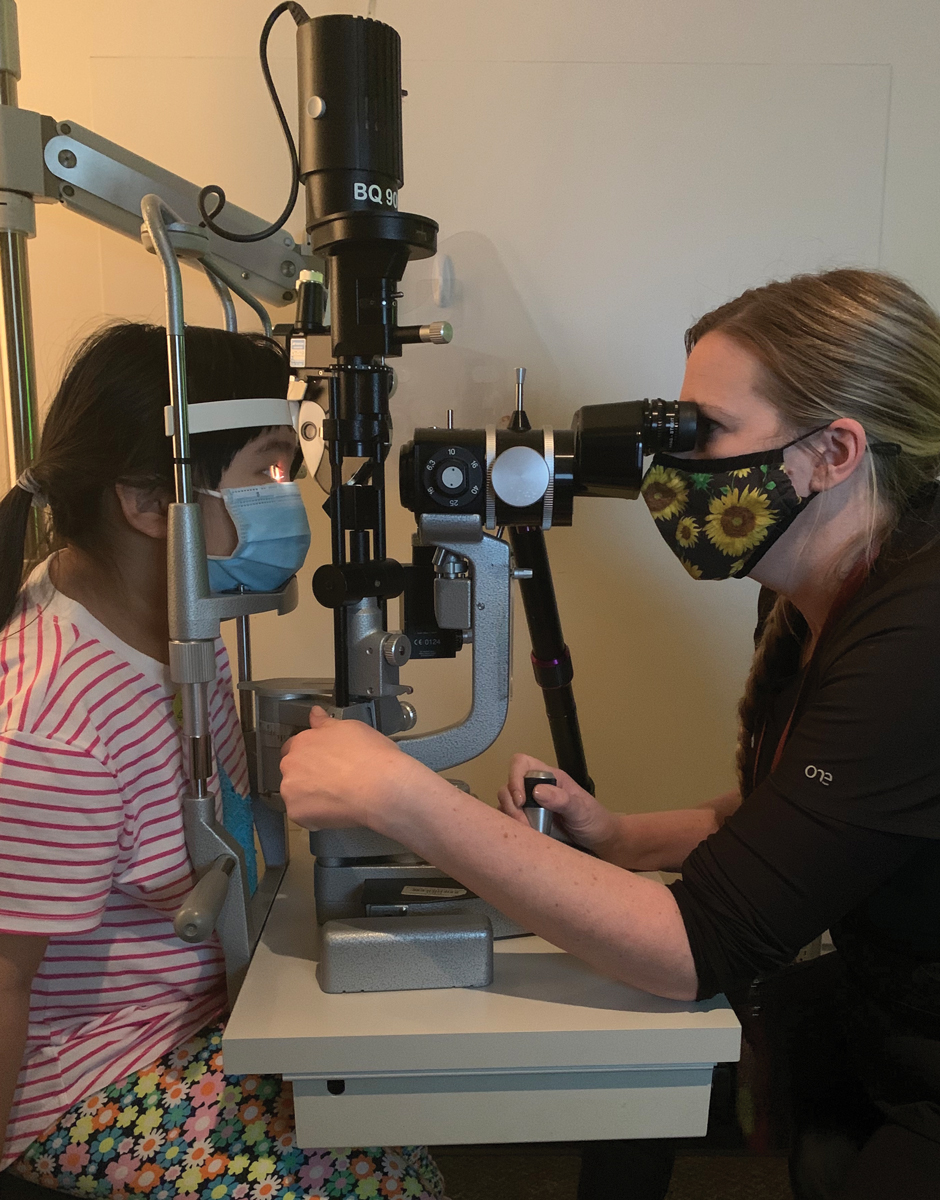 |
Both childhood-onset and adult-onset myopia incidence rates are increasing. Photo: Maria Walker, OD. Click image to enlarge. |
Myopia is considered by many as an emerging epidemic and a serious public health concern. Not only has its prevalence increased, but data also shows that myopia is developing at a younger age and with greater severity. Current research suggests the severity and timing of myopia onset are correlated; childhood myopia often has a hereditary basis and progresses into adulthood, which may in part be due to environmental factors. Because of the many variables that play into both myopia onset and progression, it is critical to first understand the pathology of the disease and then identify potential external factors.
To gain a better understanding of the epidemiology of myopia, including trends over the years in frequency, type and severity, a group of investigators analyzed data from the UK Biobank study. A total of 107,442 participants were included, all of whom had completed ophthalmic examinations and were between 40 and 69 years old. The investigators analyzed temporal changes in myopia frequency by birth cohort and looked into the association between environmental risk factors and the various types and severities of myopia. Myopia was defined as a mean spherical equivalent (MSE) of less than or equal to -1D.
The overall prevalence of myopia in the cohort was 26.9%, which included 4% with high, 9.5% with moderate and 13.3% with low myopia. From birth cohorts one (1939-44) through four (1950-54), overall disease frequency increased before plateauing. However, adult-onset myopia peaked at 15% of the population in cohort five (1960-64), two decades later than childhood-onset myopia peaked at 17.8% in cohort three. The investigators noted that this data suggests the frequency of adult-onset myopia and low myopia is increasing.
Childhood-onset myopia appeared to be increasing in severity the most significantly out of the myopia types; the overall median MSE in childhood-onset myopia was shown to decrease by a clinically meaningful amount from -3.8D in cohort one to -4.4D in cohort six.
“Although moderate myopia accounted for more than half of all childhood-onset myopia in all cohorts, the largest relative increase over time (doubling of frequency) in childhood-onset was of high myopia, driving this change in MSE,” the study authors wrote. “The subgroup analysis showed that among those with childhood-onset before the age of 10 years, the median MSE changed by -1.3D over time, while among those with onset between 11 and 17 years, the median MSE changed by only -0.5D.”
They continued, “By contrast, the median MSE in adult-onset myopia was stable at around -2.1D. Low myopia accounted for at least three-quarters of adult-onset myopia in all birth cohorts and also had the greatest relative increase (doubling) in frequency, without any change in the small contribution of high myopia.”
When the investigators factored in sociodemographic and environmental risk factors including sex, ethnicity, socioeconomic status and education, they found notable differences in the associations of each factor by type of myopia. Higher educational attainment was highly associated with overall myopia frequency, while the risk of childhood-onset myopia increased as a result of no educational qualifications. The investigators suggested that educational intensity is a major environmental risk factor for myopia and that limiting near-work activities throughout a child’s years in school may help reduce the risk of adult-onset myopia.
“But attention to childhood-onset myopia alone will not address the considerable public health impact of myopia,” the authors noted. “Whilst adult-onset myopia is generally less severe, it remains more common in the UK population and thus confers considerable personal and societal burden. The evidence of historical plateauing of frequency suggests that stabilization or reversal of temporal trends is possible. A mixed economy of research is needed to improve our understanding of modifiable risk factors across the life course and how to tackle them.”
Cumberland PM, Bountziouka V, Hammond CJ, et al. Temporal trends in frequency, type and severity of myopia and associations with key environmental risk factors in the UK: findings from the UK Biobank Study. PLoS ONE. January 19, 2022. [Epub ahead of print]. |


